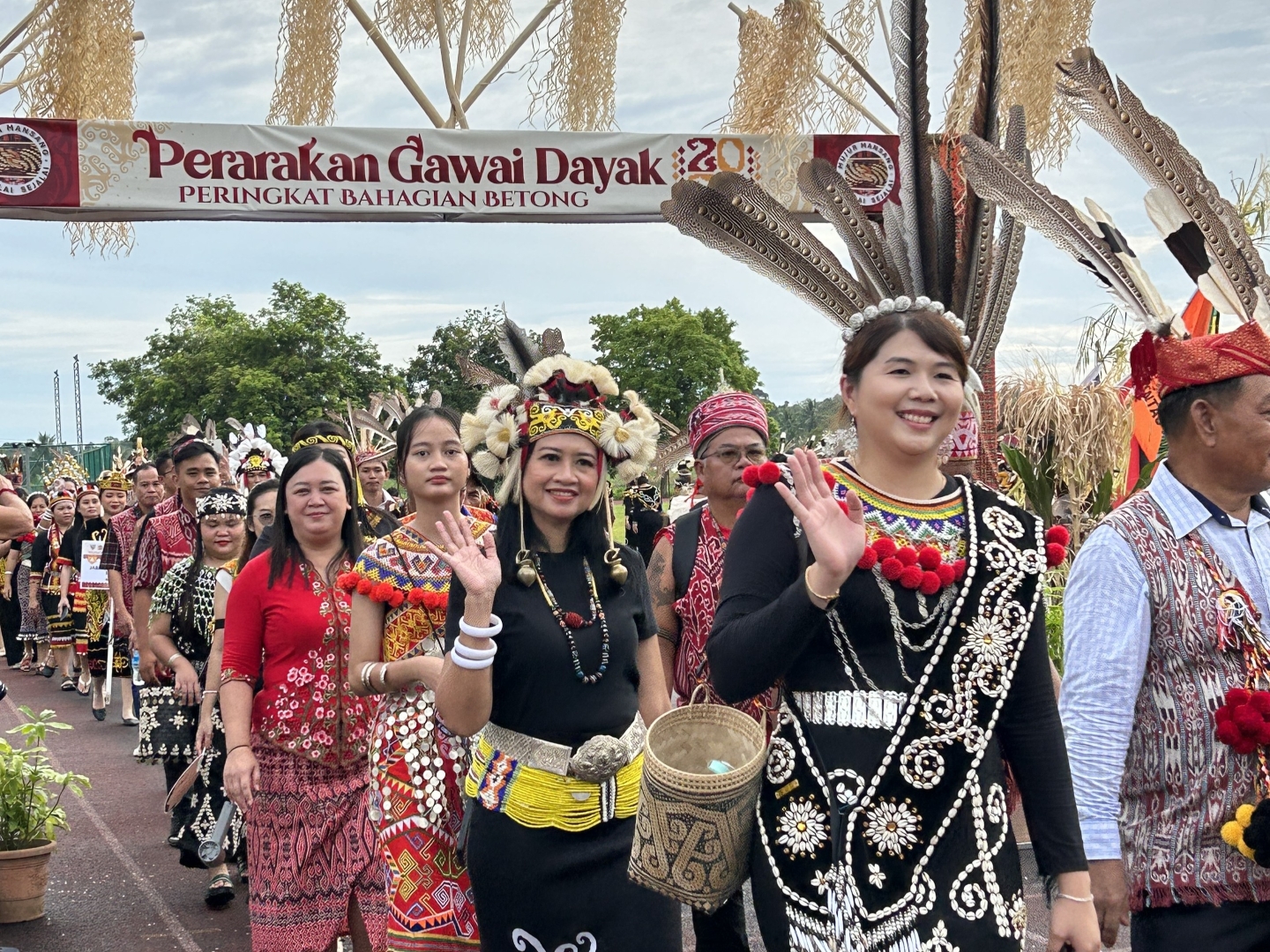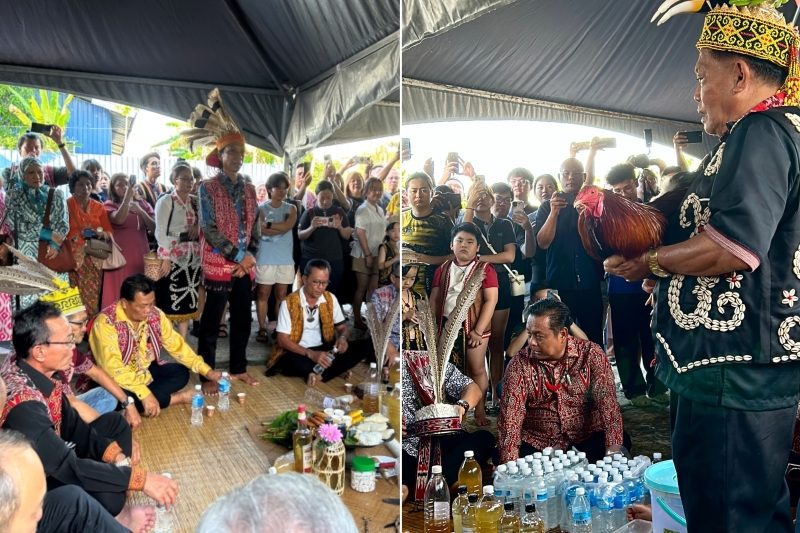
The Gawai Dayak parade was held to commemorate the major harvest festival at the start of June (All photos: Quincy Tan/ The Edge)
It is just before seven in the morning in Betong, Sarawak: the sun peeks lazily over the horizon, not yet ready to sap the morning dew off their beds of grassy blades. But though the dawn is slow to break, there is already excitement and chatter in the air. Rows and rows of people stand at attention, having awoken hours before to don their ngepan Iban and baju burung.
June 7 is the annual Gawai Dayak parade, held to commemorate the major harvest festival. While the ethnic community observes multiple types of gawai (the Iban term for celebration), Gawai Dayak is a comparatively new occurrence intended to trace and honour its peoples’ roots. It is a time for honouring heritage, preserving tradition, joyful merriment and — of course — plenty of tuak.
The event is organised as an official joint effort between the Sarawak Ministry of Tourism, Creative Industry and Performing Arts and Sarawak Tourism Federation, which also offers travel and homestay packages for out-of-towners looking to immerse themselves in the local ways of life.
dayak_bukit_kelingkang.jpg

Here in the historic headhunters’ heartland, the local folk prepare to mark the beginning of their day-long festivities with a procession through the town. Men in elaborate beadwork, furs and loincloths bare their tattoos (the kids make do with black marker pen drawings of typical motifs on their arms and legs), tall feathers fluttering proudly from their heads, while women’s sugu tinggi (silver headdresses) and armlets sparkle in the early sun.
Schoolchildren from neighbouring towns wear paper decorations and handmade hornbill memorabilia from class art projects. Though many of the more violent practices have faded out, the vigor of the Iban peoples’ warrior spirit is well and alive with every hearty cry “oo–ha!” — a customary call for celebration.
After the ribbon-cutting ceremony by Sarawak State Legislative Assembly member Gerald Rentap Jabu, the participating contingents — comprising local schools, state departments, cultural associations and various villages — come alive with powerful cheers as they begin their march out the sports complex gates. Each group is accompanied by a unique float for the parade, many featuring live sape or enkerumong performers seated within the roving structures, or decorated as miniature rumah panjang (or rumah panjai, as true locals would say).
procession_float.jpg

As songs and shouts echo through the streets, families and business owners rush out of their buildings to catch a glimpse of the grand stroll. The 2km path passes Jalan Sie Kwang Niak, where each convoy stages a performance for the guests of honour, before circling back to the meeting venue to close out the day’s morning portion.
There is a lull in the afternoon, filled with anxious preparation for the evening open house, to be hosted at the contemporary 29-door Rumah Engkeranji. Mats are rolled out along the longhouse’s communal ruai corridor days before to signal the start of Gawai celebrations in a process called beranchau tikai (its counterpart, ngiling tikai, indicates the rolling up of mats at the occasion’s end).
Around 5pm, offerings of food and wine are set up for the mandatory miring ritual, performed to appease the spirits and ask for protective blessings from the gods. Without it, a house is believed to become panas, inviting danger and death to the inhabitants. A local shaman cites the necessary incantations with a rooster in hand — a simple nick and the plucking of a feather is now favoured over live slaughter — and the symbolic walk (ngelalu pengabang) through the building begins.
miring_gawai.jpg

Guests trek past each bilik, greeted by queues of residents each offering homemade tuak as a gesture of hospitality. Non-drinkers need not feel pressured here — a simple touch of the cup serves as a polite rejection. As speeches and a ngajat dance take place, each room sets up tables with tray upon tray of mouthwatering, home-cooked dishes, forming a seemingly endless trail of food and drink along the length of the home.
Of course, a party is only as good as its after-party. Following dinner, the town’s newly built concert site and camping grounds spring to life with performances by traditional dance troupes and guest artists, and tents around the perimeter offer facials, tattoo services and additional snacks and beverages for audiences to enjoy. Every home within the settlement remains bustling with activity, teeming with chatter and cheers deep into the wee hours of the next morning.
At midnight, a thundering bang of fireworks casts a dazzling rain over the awe-struck crowd, marking the conclusion to this year’s celebrations. But for the Iban community who live with an undying connection to and love for their culture and customs, the spirit of gawai is never truly far away.


